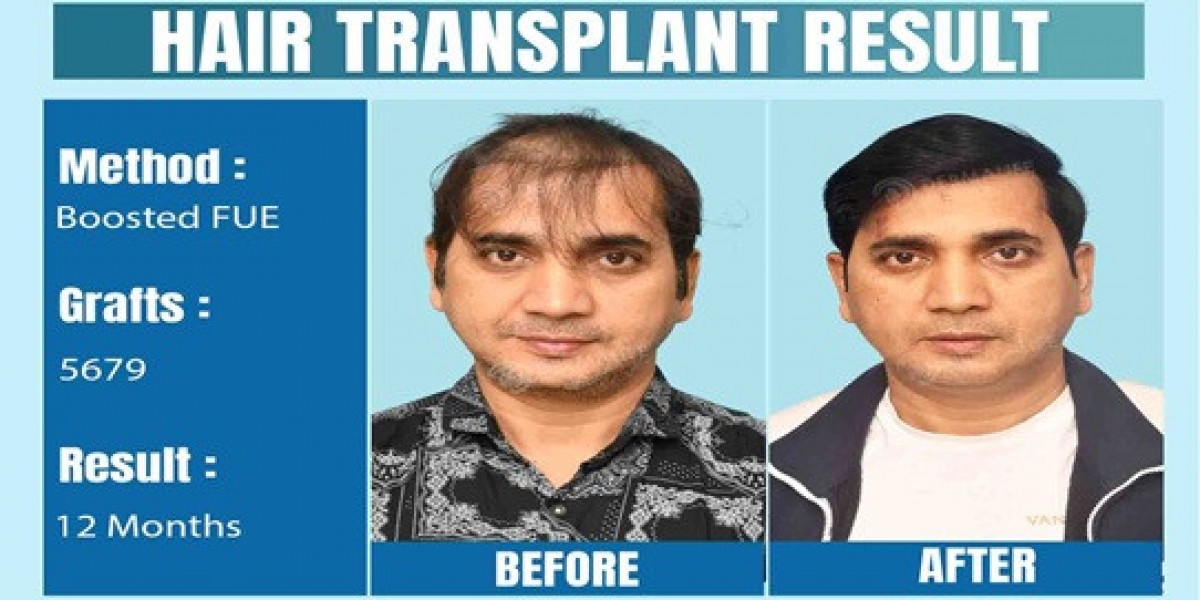It is evident that individuals experiencing hair loss are actively seeking solutions, with FUE hair transplants being a widely recognized option. While this technique ensures effective and long-lasting results, understanding the procedure, its implications, and the recovery period is crucial. Being aware of the healing timeline and necessary post-surgery care helps alleviate stress and anxiety, enabling patients to fully embrace their recovery journey. This blog provides insights into the stages of hair transplant recovery, factors affecting healing time, and essential aftercare measures.
The Hair Transplant Procedure
Before undergoing a hair transplant in Delhi, it is important to understand the procedure. There are two primary techniques: FUT (Follicular Unit Transplantation) and FUE (Follicular Unit Extraction). Both involve transferring hair follicles from donor areas, typically at the back or sides of the head, to areas with thinning or no hair.
FUT involves extracting a strip of skin containing hair follicles, which is then divided into individual grafts.
FUE, on the other hand, directly extracts hair follicles from the donor area.
Both methods yield effective results, but FUE has a shorter recovery period due to its minimally invasive nature.
Hair Transplant Recovery Stages
Day 1-3
Swelling and Redness: Post hair transplant in Delhi, swelling and redness occur in both the donor and recipient areas. This is a normal response to surgery.
Pain and Discomfort: Mild discomfort is expected, but pain relief medication prescribed by your surgeon can help.
Bandages and Dressings: The treated areas may be covered with bandages, typically removed within two days.
Day 4-7
Scabbing and Itching: Small scabs form around the grafted follicles, which should not be scratched to avoid disturbing the healing grafts.
Shampooing: After the fourth day, gentle hair washing can begin as per the surgeon’s instructions to keep the scalp clean.
Activity Restrictions: Avoid activities that cause excessive sweating or exposure to dust, such as heavy exercise or bending over frequently.
Early Recovery Period (Week 2-4)
Week 2
Scab Shedding: Scabs start falling off naturally. Avoid picking or scratching them.
Hair Shedding: Some transplanted hair may fall out due to ‘shock loss,’ which is a normal process before new growth begins.
Week 3-4
Reduced Redness: Swelling and redness gradually subside.
Resumption of Normal Activities: Most daily activities can be resumed, but avoid strenuous exercise and contact sports.
Mid-Recovery Period (Months 2-4)
Month 2
Hair Growth: Fine, vellus hair starts emerging in the transplanted area, gradually thickening over time.
Sensitivity: The scalp may still be slightly sensitive, but this improves progressively.
Month 3-4
Visible Improvements: Transplanted hair becomes thicker and more noticeable.
Follow-Up Visits: Regular check-ups with your hair transplant surgeon in Delhi help track progress and address concerns.
Moderate Recovery or Stabilization Stage (Month 5-12)
Month 5-6
Hair Thickening: Transplanted hair continues to gain volume and density. Shock-loss hair also starts regrowing.
More Natural Appearance: The treated areas look significantly more natural, and sensitivity reduces.
Month 7-12
Final Results: Full hair regrowth is typically achieved, blending seamlessly with natural hair.
Hair Care: Transplanted hair can now be cut, styled, and dyed like natural hair.
Factors Influencing Recovery Time
Several factors impact the recovery time after a hair transplant:
Procedure Type: FUE generally offers a quicker recovery compared to FUT.
Individual Healing: Factors like age, health, and adherence to post-surgery guidelines affect healing speed.
Surgeon’s Expertise: Choosing an experienced hair transplant surgeon ensures minimal trauma and a smoother recovery.
Essential Aftercare Tips
For optimal recovery, follow these key aftercare tips:
Follow Surgeon’s Instructions: Adhere to all post-operative guidelines provided by your surgeon.
Gentle Hair Care: Wash hair carefully and avoid harsh chemicals or tight hairstyles.
Avoid Sun Exposure: Protect your scalp from direct sunlight, wearing a loose-fitting hat if necessary.
Stay Hydrated: Drink plenty of water to support healing.
Healthy Diet: A balanced diet rich in vitamins and minerals promotes healthy hair growth.
Conclusion
Recovering from a hair transplant in Delhi requires patience and adherence to aftercare instructions. While initial discomfort and restrictions are expected, the long-term results of restored hair growth make the journey worthwhile. Understanding the recovery process and following medical advice ensure a smooth transition to achieving natural, healthy hair.
For expert guidance on hair transplant recovery, consult DermaLife Hair and Skin Clinic. Their specialists are dedicated to ensuring the best possible outcomes for your hair restoration journey.










